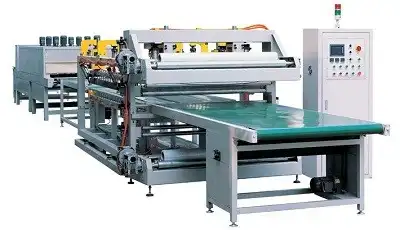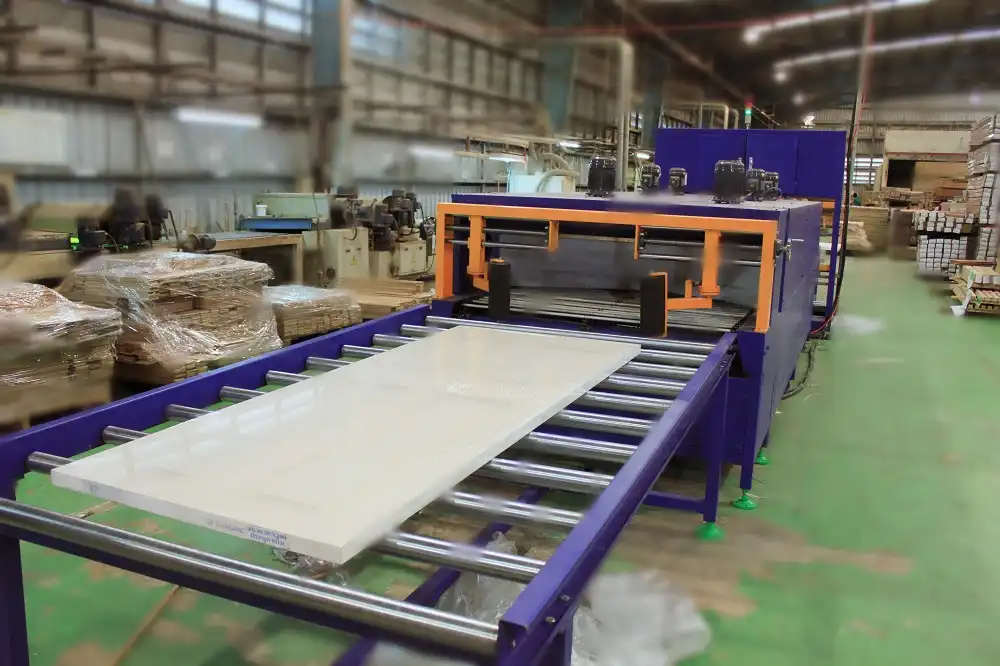Streamlining Operations: Understanding Door Shrink Wrapping Machines
Packaging large, often bulky items like doors presents unique challenges for manufacturers and distributors. Ensuring protection during transit and storage while maintaining efficiency is crucial. Door shrink wrapping machines offer a robust solution to these challenges.
Video: Demonstration of a door packing machine in operation.
What is a Door Shrink Wrapping Machine?
A door shrink wrapping machine is specialized industrial equipment designed to encase doors in a layer of polymer plastic film, commonly known as shrink film. The machine applies heat to this film, causing it to shrink tightly around the door. This process creates a secure, conforming, protective layer that shields the door from scratches, dust, moisture, and other potential damage during handling, shipping, and storage. These systems can range from manual setups to semi-automatic or fully automated lines depending on throughput requirements.
How Does the Shrink Wrapping Process Work?
While specific machine configurations vary, the fundamental process generally involves these steps:
- Film Application: The door is typically conveyed into the wrapping zone. A layer or curtain of shrink film is dispensed from rolls and draped over or around the product. In automated systems, a sealing bar may create a bag or sleeve of film around the door.
- Heat Application (Shrink Tunnel): The loosely wrapped door then passes through a heated shrink tunnel. Controlled hot air circulates within the tunnel, causing the specialized shrink film to contract uniformly around the contours of the door.
- Cooling and Sealing: As the wrapped door exits the tunnel, the film cools rapidly, retaining its tight form and creating a durable seal. This results in a tightly packaged, protected product.

automatic door shrinking machine Key Benefits of Using Door Shrink Wrapping Equipment
Integrating a door shrinking machine into your operations can yield significant advantages:
- Enhanced Product Protection: The tightly conforming film provides excellent protection against surface abrasions, dust, dirt, and moisture, reducing damage rates during shipping and handling.
- Improved Packaging Efficiency: Automated or semi-automated systems significantly speed up the packaging process compared to manual methods, increasing throughput and reducing labor requirements.
- Potential Cost Savings: Optimized film usage, reduced labor costs, and minimized product damage can lead to overall cost savings in the packaging operation. While requiring an initial investment, the ROI can be substantial for high-volume operations.
- Load Stability: When wrapping multiple doors or components together, shrink film can help unitize the load, improving stability for transport and storage.
- Professional Presentation: A neatly shrink-wrapped door presents a more professional image to the end customer compared to less secure or inconsistent packaging methods.
- Sustainability Considerations: Using the right amount of film minimizes material waste compared to bulkier packaging. Many shrink films are also recyclable (check local regulations and film specifications).
Components of an Automated Door Packaging Line
For higher volume operations, a fully automatic door packing line offers maximum efficiency. Key components typically include:
- Infeed Conveyor: Transports doors sequentially into the packaging system. This may use rollers or belts and incorporate indexing mechanisms for proper spacing.
- Film Wrapping Station: This is the core unit where the shrink film is applied. It includes film roll holders, dispensing mechanisms, and often cutting and sealing bars to create a continuous wrapping process.
- Shrink Tunnel: A heated chamber with controlled temperature and airflow designed to uniformly shrink the film around the door as it passes through on a conveyor.
- Cooling Section (Optional): Some systems incorporate a cooling zone after the shrink tunnel to help set the film quickly.
- Outfeed Conveyor/Stacking: Transports the finished, wrapped doors away from the machine. This can be integrated with automated stacking systems that place doors onto pallets for easier storage and transport, either stacked on edge or flat depending on the door type and downstream processes.

economic type door shrink packing machin4 Considerations When Selecting Equipment
Choosing the right door shrink wrapping solution depends on several factors:
- Door Dimensions and Weight: Ensure the machine can handle the size and weight range of your products.
- Required Throughput: Match the machine's speed (doors per hour/minute) to your production needs.
- Level of Automation: Decide between manual, semi-automatic, or fully automatic systems based on volume, labor availability, and budget.
- Film Type Compatibility: Verify the machine works efficiently with the type and gauge of shrink film you intend to use.
- Available Floor Space: Consider the physical footprint of the machine or line.
- Budget: Balance the initial investment cost against the potential long-term savings and efficiency gains.
Investing in appropriate door packaging technology, such as a shrink wrapping machine, is a practical step for businesses looking to protect their products effectively, streamline operations, and enhance overall packaging quality.
Door packaging machine, door shrinking machine from Fhopepack